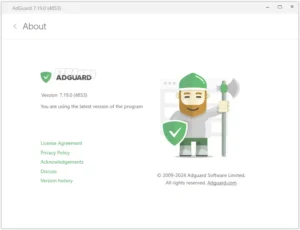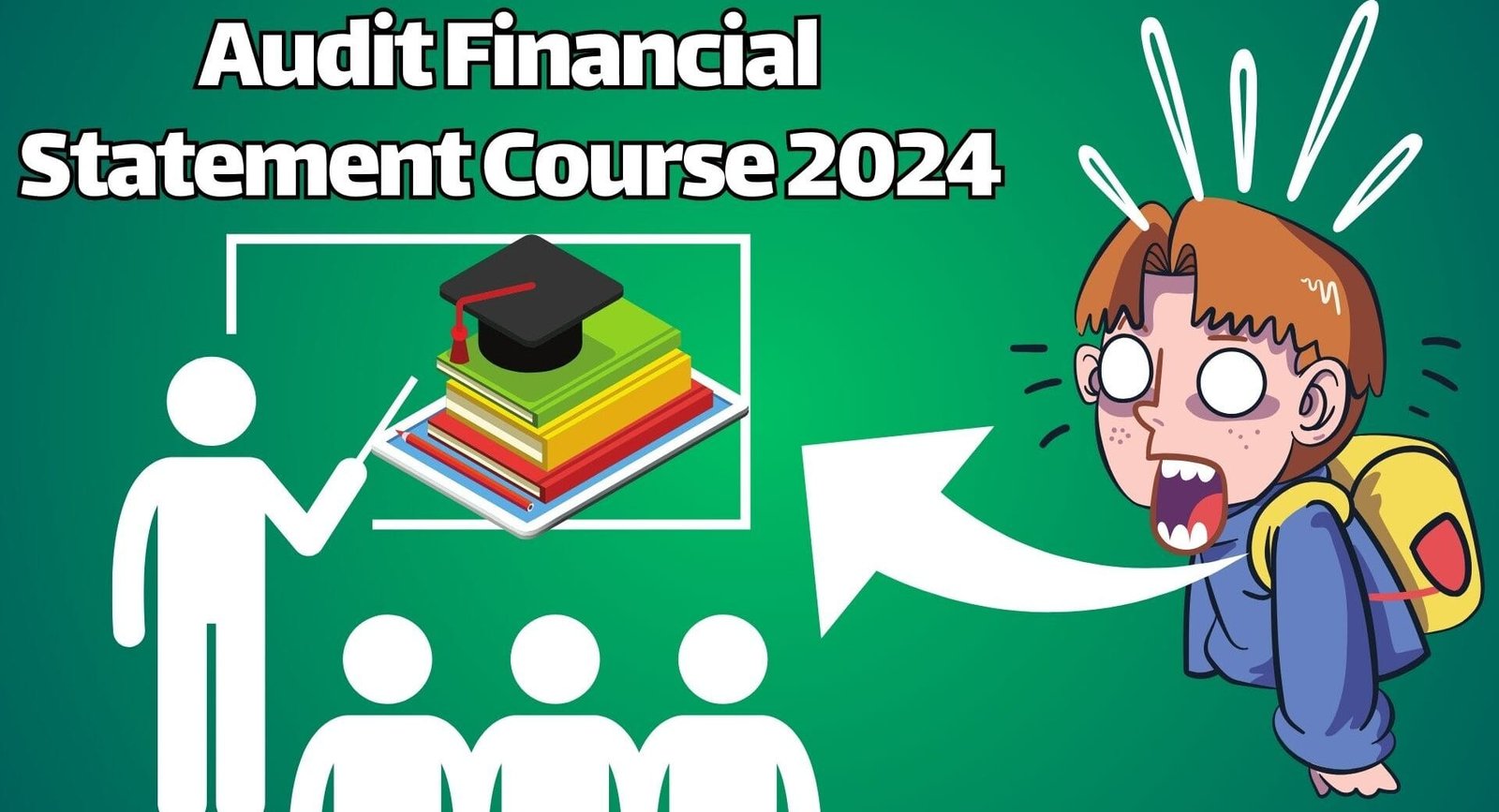Courses Top Myths About Studying in the U.S What You Need to Know Before You Go a land known for its top-tier universities and diverse opportunities. The path to American college enrollment brims with excitement and intellectual promise. As you gear up for this life-changing adventure, it’s paramount to have a reliable USA university guide by your side. From understanding the application nuances to choosing the right institution, each step you take is crucial in sculpting your academic and personal growth.

Fostering your academic career in the United States begins with informed decisions and strategic planning. With this guide, we aim to streamline your journey, providing you with key insights into the American education system and the myriad of options available to you. So, let’s set the stage for a fulfilling study experience that paves the way for not just a degree, but a global perspective and a future teeming with possibilities.
Key Takeaways
- Understanding the necessary steps for successful American college enrollment.
- Choosing the right university with a well-informed USA university guide.
- The benefits and opportunities that come with the decision to study abroad in the USA.
- Essential planning tips for navigating the American education system effectively.
- Insights into leveraging this experience for personal and professional development.
The Allure of American Education: Why Study in the USA?
The decision to study abroad is monumental and choosing the United States as the destination adds to the allure with its prestigious universities in USA. American educational institutions stand tall on the global stage, not just for their high academic standards, but also for their vibrant campuses where cultural diversity in education flourishes.
The Prestige of American Institutions
U.S. News & World Report consistently ranks American universities among the top in the world. This recognition stems from a combination of rigorous scholarship, cutting-edge research, and comprehensive resources that provide students with an unparalleled academic experience. The reputation of universities such as Harvard, MIT, and Stanford, among others, is not just a badge of honor for the institutions; it signifies a commitment to excellence that attracts students globally. International student opportunities at these prestigious schools are vast, ensuring that learners from all corners of the world can benefit from such esteemed education.
Cultural Diversity and Innovation
The Institute of International Education celebrates the USA’s dedication to creating inclusive campus environments. This mosaic of cultures promotes not only an enriching social tapestry but also fosters innovation. In the USA, cultural diversity in education acts as a catalyst for new ideas, perspectives, and collaborations, producing leaders ready to face global challenges.
Opportunities for International Students
According to the National Association for College Admission Counseling (NACAC), the USA offers a smorgasbord of opportunities for its international students. From scholarships designed to make education more accessible to work-study programs that enhance practical skills, the emphasis is on providing a holistic learning journey. Research opportunities, too, are abundant, enabling students to contribute to their fields and gain hands-on experience.
| Opportunity | Description | Benefits |
|---|---|---|
| Scholarships | Financial aid awarded based on various criteria | Reduces tuition and living costs |
| Work-Study Programs | Part-time employment offered alongside study | Earn money and gain industry experience |
| Research Opportunities | Projects in partnership with faculty | Contribute to academic discourse and build professional acumen |
Researching Your Options: Selecting the Right College
The college selection process can be as thrilling as it is daunting. With countless options to evaluate, considering academic strengths, university rankings, and campus location benefits is essential. Let’s delve into how to navigate these crucial aspects effectively to find the college that best fits your academic and personal preferences.
Assessing Academic Programs
To determine the quality of academic programs, consulting resources like The Princeton Review can provide valuable insights. Academic programs should align with your career goals and interests. Investigate faculty qualifications, departmental accolades, and the breadth of courses offered.
Understanding the Ranking System
A well-rounded university ranking guide such as Times Higher Education can illuminate the distinctions between institutions. Rankings can reflect research excellence, student-to-teacher ratios, and graduate employability rates, guiding you to make an informed decision.
Considerations for Campus Location
College Board emphasizes the importance of campus location benefits. Urban environments offer bustling atmospheres and diverse internship opportunities, whereas rural settings might offer closer-knit communities and scenic tranquility. Consider proximity to home, weather preferences, and cultural offerings.
| Aspect | Benefits | Considerations |
|---|---|---|
| Academic Programs | Specialized courses, experienced faculty, research facilities | Alignment with career objectives, program accreditation |
| University Ranking | National and global prestige, benchmarking | Emphasis on areas relevant to your field of study |
| Campus Location | Access to internships, cultural experiences, lifestyle | Cost of living, personal adaptation, travel distance |
How do you start if you choose to study in America?
For many students around the globe, starting college in the USA represents a transformative opportunity that opens doors to unparalleled academic resources, diverse cultural experiences, and extensive career prospects. Embarking on this journey requires meticulous planning, adhering to a strategic study in America checklist, and navigating the American university application process with precision and awareness. Here’s an approach to setting the groundwork for your collegiate endeavors:
- Conduct Preliminary Research: Initiate by researching potential universities and their offered programs. Familiarize yourself with different educational systems and institutions to find the one aligning with your academic and career goals.
- Set Clear Goals: Articulate your academic objectives and how they integrate with your long-term professional aspirations. This clarity will streamline your search and application efforts.
- Consult with Advisors: Seek out guidance counselors or educational consultants with expertise in the American higher education system to help chart your pathway.
A solid understanding of the university application timeline is paramount. Below is a table to assist you with the key milestones in the application process:
| Application Phase | Activities | Recommended Timeline |
|---|---|---|
| Preparation | Research universities, visit campuses, take standardized tests (SAT/ACT) | 1.5 – 2 years prior |
| Application Crafting | Request recommendation letters, draft personal statements, complete the Common App | 1 year prior |
| Submission | Submit applications, financial aid documents, and test scores | Application deadline (varies by institution) |
| Follow-Up | Interviews (if required), visa processing, and housing arrangements | Post-deadline to pre-arrival |
Embark on your academic adventure with a purposeful approach to the American university application process, using these guidelines to help set in motion a successful education experience in the United States. Remember to explore all facets of collegiate life and be proactive in every step of planning to ensure you are well-prepared for starting college in the USA.
Applying to American Colleges: An Overview
Navigating the college application process can feel like a daunting experience. This journey requires meticulous attention to detail, especially when tackling the myriad steps required to apply to American colleges. In this overview, we’ll provide an accessible guide to the Common App, writing college essays, and compiling reference letters and transcripts—a holistic approach to streamline your college application process.
The Common Application Explained
The Common Application, commonly referred to as the Common App, serves as a streamlined application platform used by a plethora of colleges across the United States. Its main advantage is its efficiency; applicants can apply to multiple institutions without the redundancy of filling out separate application forms. The platform provides a Common App guide which clarifies the necessary components, ranging from basic personal information to specific college supplements and requirements. By utilizing this robust system, students can allocate more time to perfect other parts of their application, such as essays and gathering references.
Essays and Personal Statements
The art of writing college essays is crucial in making an impression on admissions committees. Purdue University’s Online Writing Lab (OWL) emphasizes the importance of personal statements and essays as platforms to showcase one’s unique voice and experiences. Effective essays are often reflective, thoughtful, and authentic, providing a snapshot of the student’s character, aspirations, and academic potential. They act as a counterpoint to the statistical elements of an application, like grades and test scores, adding depth and narrative to a student’s profile.
Reference Letters and Transcripts
Gathering reference letters and compiling transcripts is a pivotal component of the college application process. The National Association of Secondary School Principals suggests that letters of reference should emanate from individuals who can provide insightful and personal evaluations of a student’s potential, such as teachers, mentors, or community leaders. These letters complement the academic transcripts, which serve as an official record of your academic history and accomplishments. Both elements collectively present a compelling case of the applicant’s eligibility and readiness for higher education.
Strategizing your approach to each segment of the college application process can lead to a more effective presentation of your potential as a student. Anchored by a strong Common App application, convincing essays, and thorough supporting documents, your journey to joining an American institution of higher learning is well underway.
Navigating the Visa Process: Keys to a Successful Application
Embarking on your educational journey to the U.S. begins with a crucial step – securing a student visa. Understanding the intricacies of the student visa application process and preparing meticulously can set the stage for a smooth transition into your academic pursuits.
Selecting the Appropriate Visa
Before diving into the application nuances, it’s essential to grasp the different types of student visas. Primarily, the F-1 visa caters to academic study and language training programs, whereas the J and M visas serve other specific educational and vocational purposes. F-1 visa information detailed by the U.S. Department of State’s Bureau of Consular Affairs is your starting point to understanding eligibility and requirements.
Preparing for the Visa Interview
Once the appropriate visa type is identified, preparation for the interview becomes a pivotal aspect of securing your entry into the U.S. Successful visa interview preparation involves practicing responses to common interview questions and presenting a clear study plan. EducationUSA advising centers are valuable resources that offer insights and mock interviews to boost your confidence.
Documentation and Proof of Financial Stability
Demonstrating financial stability is a non-negotiable requirement in the visa process. This entails providing meticulous documentation that attests to your ability to fund your education and living expenses while in the U.S. U.S. Citizenship and Immigration Services (USCIS) mandates a list of documents that comprise bank statements, scholarships, and funding letters as part of the application dossier.
| Document | Requirement | Purpose |
|---|---|---|
| SEVIS Form I-20 | Issued by the enrolling institution | Confirms acceptance and enrollment |
| Passport | Valid for at least six months beyond your stay | Legal travel document |
| Visa Application Form DS-160 | Completed online with photo | Official nonimmigrant visa application |
| Financial Evidence | Proof of sufficient funds | Assurance of financial support |
| Interview Confirmation Page | Printed confirmation of scheduled interview | Verification of interview appointment |
Financing Your Studies: Understanding Scholarships and Aid
Embarking on higher education in another country can be a transformative experience. For many international students, finding a viable way to finance this journey is a key step. Navigating the myriad of educational scholarships, understanding the ins and outs of financial aid for international students, and exploring diverse college funding options form the pillars of any successful study plan in the USA.
Every year, institutions and organizations offer thousands of scholarships aimed at providing financial relief to ambitious minds across the globe. These educational scholarships can range from partial to full tuition coverage and often reflect the host institution’s commitment to fostering a diverse and vibrant campus community.
- Merit-based Scholarships
- Athletic Scholarships
- Scholarships for Community Service
- Scholarships for Specific Fields of Study
Moreover, financial aid for international students often goes beyond scholarships. Many universities also offer grants, work-study programs, and even loan options to ensure that their doors remain open to the most talented students, regardless of their financial background.
| Funding Type | Definition | Typical Requirements |
|---|---|---|
| Scholarships | Financial awards based on merit, need, or other criteria. | Academic excellence, leadership roles, artistic abilities |
| Grants | Awards of financial aid that do not require repayment. | Demonstrated financial need |
| Work-Study | Part-time employment while enrolled in the institution. | Financial need and academic standing |
| Loans | Borrowed money to be paid back with interest. | Various, including cosigner or proof of ability to repay |
Finally, considering various college funding options demands a strategic approach to budgeting. It’s crucial for students to understand both tuition fees and living expenses, and to create a comprehensive budget that includes travel, accommodation, books, and insurance costs, among others.
“Investing in your education is investing in your future; with thoughtful planning and resource utilization, you can make your dream of studying in the USA a reality.”
- Researching and applying for scholarships early
- Seeking out campus employment opportunities
- Exploring external funding sources
Beyond the financial aspects, studying in the U.S. is about expanding your horizons and preparing for global opportunities. Resources are plentiful for those willing to seek them out, ensuring that educational scholarships, financial aid, and college funding options pave the way towards a brighter academic future.
Finding Accommodation: On-Campus or Off-Campus Living
Choosing the right accommodation is a crucial decision for students embarking on their college journey. Both campus housing options and off-campus accommodation come with their own set of benefits and challenges, specifically affecting student safety and commuting. In this section, we’ll explore the various considerations to keep in mind when selecting your home away from home.
Pros and Cons of On-Campus Housing
Living on campus can be a great way to immerse yourself in the college experience. It typically provides a tight-knit community and convenient access to campus resources. American Campus Communities explain that one major advantage is the proximity to classes, which significantly reduces commuting time. However, on-campus housing may also come with certain restrictions, such as limited personal space and shared facilities.
How to Find and Secure Off-Campus Housing
For those looking for more independence, off-campus accommodation might be the answer. Zillow, a trusted resource for rental listings, offers comprehensive guides on finding off-campus housing that fits your budget and lifestyle preferences. Securing such housing often involves considering lease agreements, utility costs, and the logistics of furnishing your new place.
Safety and Commuting Considerations
Whether you choose to live on or off-campus, student safety and commuting are significant concerns. The National Center for Safe Routes to School suggests thorough research into the safety of the neighborhood and the availability of reliable transportation options. Planning your routes and understanding local transit systems will be essential for a stress-free college experience.
Preparing for American Academic Culture
Embarking on university life in America can be a transformative experience for international students. To thrive in the academic culture in the USA, one must familiarize themselves with the interactive and collaborative nature of American classroom etiquette. Understanding the expectations of American professors and the subtleties of classroom discourse is key.
American classroom etiquette can vary from what many international students experience in their home countries. Participation is often expected and can sometimes form a significant part of a student’s grade. This might include sharing your opinions during discussions, giving presentations, and providing constructive criticism to peers. Adjusting to this style of active learning and engagement is an integral part of the academic culture in USA.
Moreover, university life in America places a high emphasis on academic integrity. Plagiarism and cheating are dealt with severely, so it’s imperative to understand how to properly cite sources and uphold ethical standards when completing assignments and exams.
Below are resources to help international students navigate and adapt to the different facets of academic life in America:
- University writing centers for assistance with research papers and understanding plagiarism policies
- Orientation programs that introduce the cultural norms of campus life and classroom expectations
- Peer mentorship programs which provide guidance from experienced students who can share insights into the academic culture
By embracing the vibrant and dynamic academic culture, international students can not only achieve academic success but also enrich their educational experience in the United States.
Acing the Language Barrier: Tips for Non-Native Speakers
Mastering the English language can be a critical step in unlocking the full potential of your educational experience in the United States. The journey to English language proficiency not only enhances academic success but also facilitates smoother integration into campus life. Therefore, non-native speakers must explore available ESL resources and employ various tactics to overcome language barriers. Below are two key strategies for non-native speakers to enhance their language abilities and fully embrace the opportunities offered by American colleges.
Improving Your English Proficiency
To enhance your command of the English language, consistent practice and exposure are paramount. Here are some practical ways to increase your proficiency:
- Immerse yourself in the language by reading books, watching English movies and series, and listening to podcasts.
- Engage in conversations with native speakers whenever possible, as this interaction will enable you to learn colloquial expressions and improve fluency.
- Enroll in English language courses that target specific needs such as academic writing or public speaking to bolster your confidence in an academic setting.
- Take advantage of the strategies provided by the TOEFL official website, which offers a comprehensive approach to improving English language skills essential for college admission.
Utilizing Language Resources on Campus
Many American universities offer resources to support ESL students in overcoming language barriers. Here’s how you can take advantage of these resources:
| Resource Type | Description | Benefits |
|---|---|---|
| Language Labs | Facilities equipped with multimedia resources to practice listening, speaking, and writing. | Accessible tools and materials catered to language learning. |
| Tutoring Services | One-on-one or group sessions led by experienced tutors focusing on language skills. | Personalized instruction and feedback on language use. |
| Conversation Groups | Informal groups where students can practice speaking and listening with their peers. | Opportunities to practice everyday language in a stress-free environment. |
| Writing Centers | Services dedicated to helping students improve their writing skills for academic papers. | Assistance with structure, grammar, and academic style. |
Remember that the process of improving your English language proficiency is ongoing. Resources like those recommended by the TESOL International Association extend beyond the classroom, providing support systems essential for ESL students. By engaging actively with the resources and communities at your university, you’re not just overcoming language barriers but also enriching your academic journey and fostering a wider sense of belonging on campus.
Networking and Building Connections in College
While academics are a critical aspect of college life, college networking plays an equally pivotal role in shaping students’ futures. From the first day on campus, students should look for ways to forge meaningful student connections that will not only enhance their educational experience but also support their professional growth. Networking in a university setting is about more than just meeting people; it’s about building relationships at university that can lead to collaborative projects, internships, and job opportunities.
One effective strategy for college networking includes joining campus clubs and organizations that align with personal and professional interests. Here, one can meet like-minded peers and seniors who can provide guidance and mentorship. Being active in such communities fosters strong student connections and often leads to lifelong friendships and career allies.
Another critical aspect of building relationships at university is engaging with faculty members. Professors and lecturers are invaluable resources with extensive knowledge and networks. Attending office hours, participating in discussions, and seeking advice on academic and career goals can solidify student connections with faculty, who can be influential in recommending students for opportunities within and beyond college walls.
Furthermore, in today’s digital age, platforms like LinkedIn serve as powerful tools for maintaining relationships and showcasing one’s professional profile. Students should create a robust LinkedIn profile, connect with alumni, join industry-related groups, and engage with content relevant to their career path.
- Join student organizations related to your field of study
- Attend networking events and career fairs
- Connect with alumni through university-based programs
- Participate in student-faculty collaborative research projects
- Engage with peers and professionals on social media platforms
Ultimately, college networking is an art that requires intentionality and dedication. It’s about creating value for others and oneself through active engagement and mutual support. By investing time in building relationships at university, students can develop a strong network that will support their educational journey and help pave the path for a successful career.
The cornerstone of effective college networking is the realization that every student connection one makes is an avenue towards potential opportunities and an enriched collegiate experience.
Balancing Study and Social Life: Time Management Tips
Mastering time management in college is crucial for achieving academic success while also enjoying a vibrant social and extracurricular life. Students who develop strong study habits and engage in various extracurricular activities often find college to be a more rewarding experience. Let’s delve into how this can be accomplished.
Effective Study Habits
Stanford University’s resources underscore that effective study tips are at the heart of good time management. Creating a study schedule, avoiding multitasking, and setting SMART goals—specific, measurable, achievable, relevant, and time-bound—are all strategies that can elevate your study routine.
- Start with a weekly plan that carves out specific times for classes, studying, and activities.
- Use tools like planners or digital calendars to visually organize your time.
- Review and adjust your plan regularly to find what works best for you.
- Remember to take regular breaks to refresh your mind and improve focus.
Engaging in Extracurricular Activities
Extracurricular involvement isn’t merely a way to have fun in college—it helps you to build a well-rounded skill set and make valuable connections. The National Survey of Student Engagement (NSSE) suggests that involvement in clubs, sports, and other groups is key to a fulfilling college experience. However, balancing these activities with your academic priorities is essential.
| Activity Type | Benefits | Time Commitment |
|---|---|---|
| Sports Teams | Physical fitness, teamwork, discipline | High, with scheduled practices and games |
| Student Government | Leadership skills, school involvement | Medium, with periodic meetings and responsibilities |
| Volunteer Work | Community service, networking | Flexible, can vary widely based on the project |
To maintain balance:
- Choose activities that align with your passions and career objectives.
- Be realistic about the time you can commit to extracurriculars.
- Communicate with activity leaders about your academic schedule.
- Don’t be afraid to say no if your workload becomes unmanageable.
Incorporating both study tips and extracurricular involvement into your routine, you’ll not only succeed academically but also enjoy the social aspects of college life. Remember, time management in college is about finding the perfect balance that works for you.
Staying Healthy and Safe While Studying Abroad
Embarking on an international study journey can be as challenging as it is exciting. Maintaining good health and ensuring safety are crucial for a rewarding overseas education experience. This segment provides crucial insights into student healthcare services, mental health resources, and safety tips for students to foster a supportive environment away from home.
Accessing Healthcare Services
Understanding healthcare options is vital for students studying abroad. The Centers for Disease Control and Prevention (CDC) recommends that international students familiarize themselves with available student healthcare services on campus, including primary care, emergency services, and health insurance plans tailored to their needs.
Regular check-ups and preventive care are not just recommended, they are essential for your wellbeing during your study period abroad.
Mental Health and Coping with Homesickness
Moving to a new country can take a toll on a student’s mental well-being. It’s paramount to explore mental health resources available at the university. The American Psychological Association advises seeking out counseling services, support groups, and stress-management workshops to address homesickness and other mental health challenges.
It’s equally important for students to have a safety net of trusted peers and mentors, as well as awareness of safety tips for students to navigate their new surroundings with confidence and ease.
| Service | Benefits | Access Points |
|---|---|---|
| Student Healthcare | On-campus medical services, preventative care, health education | University health centers, partnered hospitals |
| Mental Health Support | Counseling, workshops on stress relief, peer support groups | Campus Counseling Center, online resources |
| Safety Resources | Emergency response, safety protocols, awareness campaigns | Campus safety office, mobile safety apps |
By taking advantage of these resources and services, students can better manage their health and safety, ensuring a successful academic journey abroad.
Exploring Work Opportunities: Internships and Part-Time Jobs

Embarking on higher education in the United States opens up a plethora of opportunities for students to not only excel academically but also to gain valuable work experience. College internships and part-time jobs for students are integral components of the college experience, especially for those opting to work while studying in the USA. These opportunities not only provide financial support but also offer real-world experience and networking possibilities that are crucial for post-graduation success.
While exploring work options, it’s important to understand the legal framework that governs student employment in the United States. International students typically need authorization to work off-campus but can take advantage of on-campus employment without needing special permission. It’s essential to comply with all regulations to maintain lawful immigration status.
For those seeking college internships, many institutions offer career services that connect students with companies offering positions relevant to their field of study. These experiential learning opportunities are a golden chance to understand industry intricacies and build professional acumen.
Meanwhile, part-time jobs for students can range from campus employment, such as working in the library or dining halls, to off-campus employment in local businesses. These roles help in managing daily expenses and understanding the work culture in the USA.
“Engaging in internships and part-time jobs while studying not only eases financial burdens but also significantly enriches the educational journey, equipping students with skills and experiences that textbooks alone cannot teach.”
Let’s take a closer look at some common part-time roles and internships that students often engage in:
- Research Assistant on campus
- Teaching Assistant for undergraduate classes
- Retail or Food Service Worker
- Internship in a corporate setting
- Start-up internship roles, particularly in tech hubs
- On-campus roles in student facilities, such as gyms or student centers
The following table provides an example of how college internships can complement academic pursuits by aligning with a student’s field of study:
| Field of Study | Internship Role | Possible Employers |
|---|---|---|
| Business Administration | Marketing Intern | Local businesses, Start-ups |
| Computer Science | Software Development Intern | Tech companies, Start-ups |
| Graphic Design | Graphic Design Intern | Marketing agencies, In-house brand teams |
| Life Sciences | Laboratory Research Intern | Research institutions, Biotech companies |
| Engineering | Engineering Intern | Manufacturing companies, Engineering firms |
In conclusion, engaging in work while studying in the USA is an outstanding way to enhance educational outcomes. Whether through college internships or part-time jobs, students gain an edge by developing practical skills and professional relationships that pave the way for a successful career. Navigating these opportunities with an understanding of legalities and academic balance is key to reaping the full benefits of the American college experience.
Conclusion
Embarking on your American educational journey is an exciting leap towards a future filled with endless possibilities. By now, you’ve gathered invaluable insights into the various steps that pave the way toward studying in the USA—from prestigious institutions that promise a diverse and innovative culture to the nitty-gritty of visa applications and funding options. In wrapping up this comprehensive guide, we aim to underscore the final tips for studying in USA that should accompany you as you chart your course to international academia.
The threads of advice we’ve woven together serve as your map: selecting the right college that meets your academic aspirations, the application process with pointers on essays and references, sorting out your accommodation, and ultimately setting into the academic culture and work opportunities while stateside. It is significant to revisit these guidelines when making pivotal decisions, ensuring that you are thoroughly prepared. The summary of your American educational journey covered in this guide is the cornerstone upon which you can build a structured, goal-oriented, and immensely fulfilling experience in the United States.
Navigating this passage will require dedication, a spirit for adventure, and a willingness to grow outside your comfort zone. But armed with the knowledge and resources detailed in this guide, you are set up for more than just academic excellence; you’re on track to embrace a transformative phase of personal and professional development. As you set out to seize this opportunity, may this journey ahead be as enlightening as it is rewarding.

FAQ
What steps should I take to start my study abroad journey in the USA?
Begin by conducting thorough research on American colleges, evaluating your academic and personal goals, consulting with educational advisers, and understanding the application timeline and requirements for U.S. universities.
Why is American education considered prestigious and beneficial for international students?
American institutions are globally recognized for their academic excellence, research opportunities, and diverse student body. This prestige, along with a commitment to innovation and cultural diversity on college campuses, makes the USA an attractive destination for international students seeking quality education.
How do I select the right American college for my studies?
Assess academic programs by reviewing their strengths, use university ranking guides for reference, and consider the campus location by analyzing factors such as urban versus rural settings, distance from home, and local climate and culture.
Can you explain the American college application process for international students?
The process includes filling out the Common Application for multiple institutions, writing personal essays and statements, requesting reference letters, and sending transcripts. It’s crucial to pay attention to each college’s specific requirements and deadlines.
What are the key steps in applying for a student visa to study in the USA?
Choose the appropriate visa type (F-1, J-1, or M-1), prepare thoroughly for the visa interview by understanding common questions, and ensure you have all the required documentation, including proof of financial stability for your education and stay in the USA.
What should I know about financing my studies in the United States?
Explore scholarships and financial aid options available for international students, consider work-study programs, and understand the costs associated with college education, including tuition and living expenses. Plan your budget carefully.
How do I decide between on-campus and off-campus housing in the USA?
Weigh the pros and cons of living on campus, such as convenience and community engagement, against off-campus housing, which may offer more independence. Consider safety, commuting times, and any additional costs associated with off-campus living.
What cultural adjustments should I prepare for in American academic settings?
Familiarize yourself with American classroom etiquette, teaching styles, expectations for participation, and academic integrity. Utilize campus resources to help you adapt to the academic culture in the USA.
As a non-native English speaker, how can I improve my language proficiency for studying in America?
Practice English through courses or self-study, prepare for proficiency exams like TOEFL, and make use of language support services offered by universities, including tutoring, language labs, and conversation groups.
How important is networking in American colleges, and how can I build connections?
Networking is crucial for academic and career opportunities. Engage with your peers, join student organizations, connect with faculty, and utilize professional networking platforms to build valuable relationships.
Do you have any time management tips for balancing study and social life in college?
Develop effective study habits, prioritize tasks, and schedule your time. Balance academic responsibilities with extracurricular activities by setting clear goals and limits to make the most of your college experience.
What health and safety resources are available to international students in the USA?
Most colleges offer healthcare services on campus. Familiarize yourself with these services, understand healthcare insurance options, and know where to get mental health support, including coping with homesickness and adjusting to a new environment.
What should I know about work opportunities and internships as a student in the USA?
Be aware of legal work regulations for international students, seek internships and part-time jobs related to your field of study, and take advantage of college career services to gain practical experience and enhance your resume.























